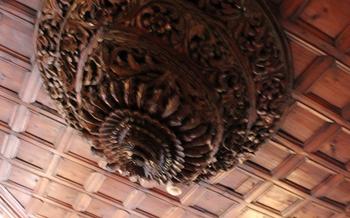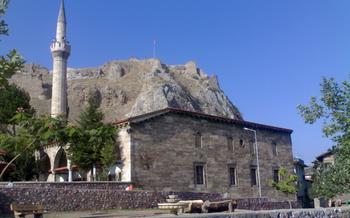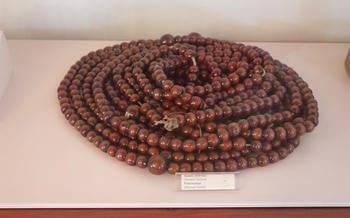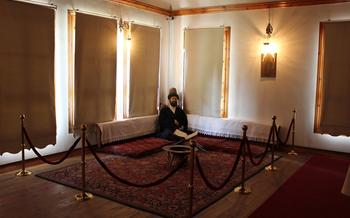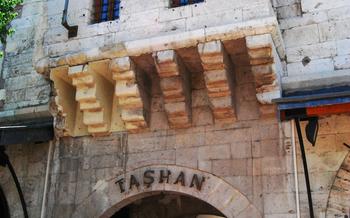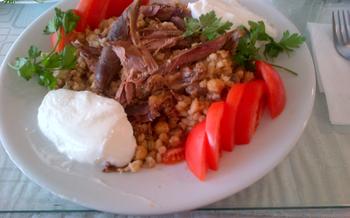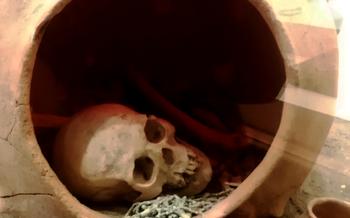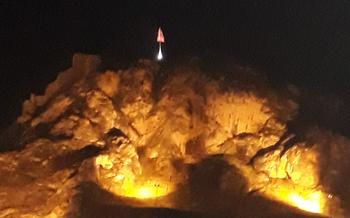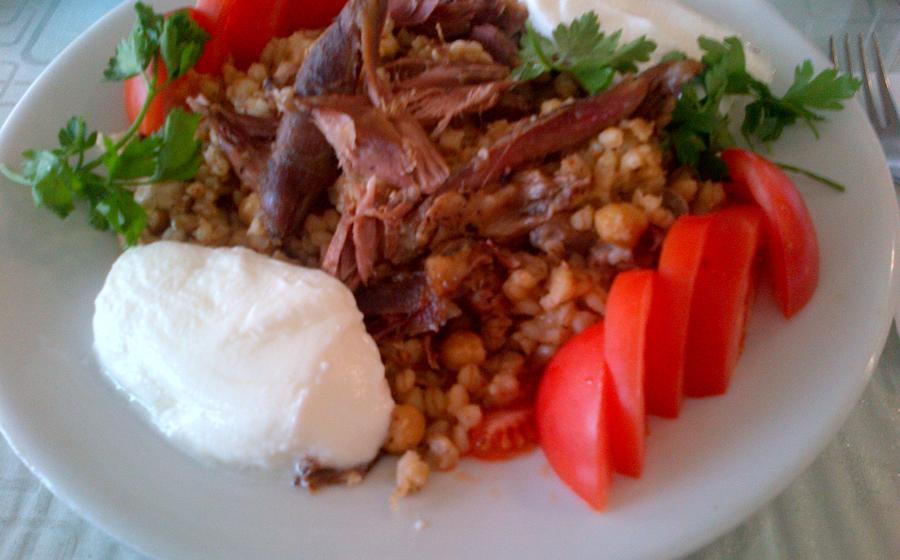
Eski Gümüşhane houses in Tokat
- The Eski Gümüşhane Houses: A Historical Legacy
- Exploring the Neighborhood: A Journey Through Time
- A Walk Through Eski Gümüşhane: Unveiling Hidden Treasures
- The Tokat Museum: A Window into the Past
- The Great Inn of Tokat: A Symbol of Hospitality
- The Tokat Castle: A Majestic Fortress
- The Yazmacı Bedesten: A Center of Commerce
- The Pazar Mosque: A Sacred Landmark
- The Ali Pasha Madrasa: A Center of Islamic Learning
- The Hıdırlık Tepesi: A Natural Retreat
- The Yeşilırmak River: A Source of Life
- Tokat Gastronomy: A Culinary Delight
- The Tokat Festivals: A Celebration of Culture
- Insider Tip: Unveiling Hidden Gems
The Eski Gümüşhane Houses: A Historical Legacy
The Eski Gümüşhane (Old Gümüşhane) houses in Tokat, Turkey, stand as a testament to the city's rich history and architectural heritage. Built in the late 19th century, these grand mansions were once home to the wealthy families of Tokat. Constructed using traditional Ottoman techniques, the houses showcase a unique blend of architectural styles, reflecting the city's diverse cultural influences.
Their distinctive facades, adorned with intricate carvings and colorful tiles, hint at the opulence and grandeur that once defined the lives of their occupants. Inside, visitors can marvel at the spacious rooms, high ceilings, and ornate interiors, which have been meticulously preserved over the years. Each house tells a story, offering a glimpse into the lives of Tokat's elite during the late Ottoman era.
Exploring the Neighborhood: A Journey Through Time
The Eski Gümüşhane neighborhood is located in the heart of Tokat, a city with a rich and diverse history. The houses are situated within walking distance of many important landmarks, including the Tokat Museum, the Great Inn of Tokat, the Sulusokak Bath, and the Tokat Castle. The neighborhood itself is a living museum, with narrow cobblestone streets, traditional Turkish architecture, and a palpable sense of history. Visitors can easily spend hours wandering through the neighborhood, admiring the old houses and soaking up the unique atmosphere.
The surrounding landmarks add to the historical charm of the Eski Gümüşhane neighborhood. The Tokat Museum houses a collection of artifacts and exhibits that tell the story of the city's past, including items from the Eski Gümüşhane houses. The Great Inn of Tokat, with its grand architecture and historical significance, is a must-see for visitors to the city. The Sulusokak Bath, with its traditional bathing rituals and unique architecture, offers a glimpse into the daily life of Tokat's residents in the past. And the Tokat Castle, with its strategic location and impressive fortifications, provides stunning panoramic views of the city and the surrounding countryside.
A Walk Through Eski Gümüşhane: Unveiling Hidden Treasures
Taking a leisurely stroll through the Eski Gümüşhane neighborhood is like embarking on a journey through time. The narrow cobblestone streets, lined with beautifully preserved Ottoman-era houses, transport visitors to another era. Each house is a testament to the architectural prowess and cultural heritage of Tokat.
One of the most notable houses in the neighborhood is the Tokatlıoğlu House, a magnificent example of traditional Ottoman architecture. Built in the 19th century, the house features intricate wood carvings, colorful stained glass windows, and a spacious courtyard. Visitors can explore the house's many rooms, each adorned with unique decorative elements.
Another must-see house is the Gümüşoğlu House, renowned for its stunning frescoes. These vibrant paintings depict scenes from daily life, mythology, and history, offering a glimpse into the minds and imaginations of the people who lived here centuries ago.
As you wander through the neighborhood, be sure to look out for the many architectural details that make the Eski Gümüşhane houses so special. Notice the intricate stonework, the carved wooden balconies, and the decorative eaves that adorn the buildings. Each house has its own unique charm and character, making every corner of the neighborhood a feast for the eyes.
In addition to the architectural wonders, the Eski Gümüşhane neighborhood is also home to a number of interesting shops and boutiques. Visitors can browse for traditional Turkish handicrafts, souvenirs, and antiques, or simply enjoy a cup of tea or coffee in one of the many charming cafes.
As the sun begins to set, the Eski Gümüşhane neighborhood takes on a magical aura. The streets are illuminated by the warm glow of lanterns, casting long shadows across the cobblestones. The air is filled with the sounds of traditional music and the laughter of people enjoying an evening stroll. It's the perfect time to sit back, relax, and soak up the unique atmosphere of this historic neighborhood.
The Tokat Museum: A Window into the Past
Housed in a beautifully restored historical building, the Tokat Museum stands as a testament to the city's rich cultural heritage. It offers a captivating journey through time, showcasing a diverse collection of artifacts, exhibits, and interactive displays that bring the history and culture of Tokat to life.
Within the museum's walls, visitors can delve into the captivating story of the city, from its ancient origins to its vibrant present. Explore the galleries dedicated to local history, where archaeological findings, historical documents, and traditional costumes provide a glimpse into the lives of Tokat's past inhabitants.
Among the museum's highlights are the artifacts recovered from the Eski Gümüşhane houses, offering a tangible connection to the architectural and cultural legacy of this unique neighborhood. These artifacts, ranging from intricate carvings to household items, provide insights into the daily lives of the families who once resided in these historic homes.
Interactive displays throughout the museum enhance the visitor experience, allowing visitors to engage with the exhibits and delve deeper into the stories they tell. Touchscreens, multimedia presentations, and hands-on activities bring the past to life, making history accessible and engaging for visitors of all ages.
A visit to the Tokat Museum is an essential experience for anyone seeking to understand the rich tapestry of Tokat's history and culture. It is a place where the past comes alive, offering a glimpse into the lives of those who shaped this remarkable city.
The Great Inn of Tokat: A Symbol of Hospitality
A Historic Landmark with a Grand Legacy
Amidst the bustling streets of Tokat, stands the Great Inn, a remarkable monument that evokes the city's rich history and tradition of hospitality. Built in the 16th century during the reign of the Ottoman Empire, this architectural marvel has borne witness to centuries of travelers, merchants, and pilgrims who sought refuge within its walls.
Architectural Grandeur and Symbolism
The Great Inn stands as a testament to the architectural prowess of the Ottoman Empire. Its imposing structure features a vast courtyard surrounded by two-story galleries supported by elegant arches. The intricate carvings and decorative elements that adorn the inn's facade reflect the artistry and craftsmanship of the era. The central fountain in the courtyard symbolizes the importance of water and hospitality in Islamic culture.
A Center of Trade and Cultural Exchange
Throughout history, the Great Inn served as a vital hub for trade and cultural exchange. Merchants from far-flung regions converged here to conduct business, sharing goods, ideas, and stories. The inn's strategic location along the trade routes that connected Anatolia with the Middle East and Europe made it a melting pot of cultures and a center of commerce.
A Modern-Day Cultural Center
Today, the Great Inn has been meticulously restored and transformed into a vibrant cultural center. It hosts a variety of exhibitions, concerts, and events that showcase the rich heritage of Tokat. Visitors can wander through the inn's galleries, admire the restored architecture, and immerse themselves in the city's history. The Great Inn stands as a symbol of Tokat's enduring spirit of hospitality, welcoming travelers from all corners of the world to experience its unique charm and cultural treasures.
The Tokat Castle: A Majestic Fortress
Standing tall and proud on a hilltop overlooking the city, the Tokat Castle is an imposing edifice that speaks volumes about the city's rich history and strategic importance. Built in the 12th century by the Danishmend dynasty, this formidable fortress served as a defensive stronghold against invading forces throughout the ages. Its massive stone walls, reinforced by towers and bastions, have withstood the test of time, bearing witness to numerous battles and sieges.
The castle's strategic location, perched atop a rocky promontory, provided a commanding view of the surrounding landscape, allowing its defenders to spot approaching enemies from afar. Its intricate system of fortifications, including moats, drawbridges, and arrow slits, made it virtually impregnable. The castle's interior, once a bustling hub of military activity, now lies in ruins, yet its grandeur can still be felt in the remnants of barracks, stables, and cisterns.
Climbing to the castle's highest point rewards visitors with breathtaking panoramic views of Tokat and its environs. The city's rooftops and minarets stretch out below, while the distant mountains form a picturesque backdrop. A visit to the Tokat Castle is a journey through time, offering a glimpse into the city's glorious past and the resilience of its people.
The Yazmacı Bedesten: A Center of Commerce
Amidst the vibrant tapestry of Tokat's historical landmarks, the Yazmacı Bedesten stands as a testament to the city's rich trading past. Once a bustling covered market, this architectural gem epitomizes the fusion of commerce and culture.
Once known as the "Great Bazaar of Tokat," the Yazmacı Bedesten was a hive of activity during the Ottoman era. Merchants from far and wide congregated beneath its vaulted ceilings, exchanging goods and fostering cultural exchange.
The marketplace's intricate design reflects the ingenuity of its architects. Rows of shops, each specializing in a particular trade, lined the interior, creating a labyrinth of narrow passages and alcoves. The central courtyard, bathed in natural light, served as a meeting point for merchants and shoppers.
Today, the Yazmacı Bedesten has undergone a transformation, evolving into a vibrant shopping center. While the essence of its past remains palpable, the marketplace now houses a diverse array of modern shops and boutiques. Visitors can browse for traditional Turkish handicrafts, savor the aromas of freshly ground coffee, or indulge in the latest fashion trends.
In addition to its commercial significance, the Yazmacı Bedesten holds profound historical value. Its sturdy walls and graceful arches have witnessed centuries of economic and cultural exchange, contributing to the rich tapestry of Tokat's heritage.
The Pazar Mosque: A Sacred Landmark
Standing tall and majestic in the heart of Tokat, the Pazar Mosque is a testament to the city's rich history and religious heritage. Built in the 16th century during the Ottoman era, the mosque holds a significant place in the spiritual and cultural landscape of Tokat. Its unique architectural features and exquisite decorations make it a must-visit attraction for travelers seeking a glimpse into the city's past.
The Pazar Mosque boasts a remarkable blend of architectural styles, showcasing both Seljuk and Ottoman influences. Its imposing minaret, adorned with intricate tilework, rises gracefully towards the sky, while the spacious courtyard invites visitors to find solace and tranquility within its walls. The mosque's interior is adorned with beautiful calligraphy and vibrant frescoes, creating a sense of awe and inspiration.
Beyond its architectural splendor, the Pazar Mosque holds deep religious significance for the people of Tokat. Throughout history, it has served as a place of worship, gathering, and community. The mosque's central location has made it a focal point for religious ceremonies, festivals, and celebrations. Visitors can often witness locals engaging in fervent prayers, seeking blessings, and connecting with their faith within the mosque's sacred space.
Whether you are a history buff, an architecture enthusiast, or a traveler seeking spiritual enlightenment, the Pazar Mosque offers a truly enriching experience. Its unique blend of architectural styles, historical significance, and religious fervor make it an unforgettable landmark that should not be missed during your visit to Tokat.
The Ali Pasha Madrasa: A Center of Islamic Learning
Amidst the vibrant tapestry of Tokat's historical landmarks, the Ali Pasha Madrasa stands as a testament to the city's rich Islamic heritage. Built in the 16th century by the Ottoman governor Ali Pasha, this madrasa served as a prominent center of Islamic learning and education for centuries.
The architectural design of the madrasa reflects the grandeur and elegance of Ottoman architecture. Its imposing stone façade features intricate carvings and decorative elements, showcasing the artistry and craftsmanship of the period. Inside, the madrasa comprises a central courtyard surrounded by a series of domed chambers, each adorned with colorful tiles and intricate patterns.
As a center of Islamic learning, the Ali Pasha Madrasa played a crucial role in educating and training scholars, theologians, and jurists. Students from across the region flocked to Tokat to study various Islamic disciplines, including Quranic studies, Hadith, Islamic law, and Arabic language.
Over the centuries, the madrasa has undergone several renovations and restorations, ensuring its preservation as a cultural and historical landmark. Today, the Ali Pasha Madrasa continues to serve as a symbol of Tokat's rich Islamic heritage, attracting visitors from around the world who come to admire its architectural beauty and learn about its historical significance.
The Hıdırlık Tepesi: A Natural Retreat
Tokat's Hıdırlık Tepesi, also known as Prophet Elias Hill, is a hill located within the city limits and offers panoramic views of Tokat and the surrounding countryside. Of great historical and religious significance, the hill is believed to be the site of an ancient monastery and is still a popular pilgrimage spot for locals.
The hilltop is home to a cluster of religious buildings, including the Hıdırlık Mosque, which was built in the 16th century and is known for its beautiful architecture and serene atmosphere. Visitors can explore the mosque and its courtyard, which offers breathtaking views of the city and the Yeşilırmak River.
In addition to its religious significance, Hıdırlık Tepesi is also a popular spot for recreational activities. Locals and tourists alike enjoy hiking, picnicking, and taking in the stunning views from the hilltop. During the summer months, the hill is also home to a variety of festivals and events, including religious ceremonies and cultural performances.
Whether you're interested in history, religion, or simply looking for a beautiful place to escape the hustle and bustle of city life, Hıdırlık Tepesi is a must-visit destination in Tokat. So be sure to add it to your itinerary and experience the natural beauty and cultural significance of this remarkable hill for yourself.
The Yeşilırmak River: A Source of Life
The Yeşilırmak River, meaning "Green River" in Turkish, is a vital natural landmark that adds to the charm and beauty of Tokat. Originating in the Sivas province, the river flows through the city, creating a picturesque landscape and providing a source of life for the region.
Natural Beauty and Ecological Importance:
The Yeşilırmak River boasts stunning natural beauty, with its emerald-green waters meandering through lush green valleys and rocky canyons. The riverbanks are home to a diverse ecosystem, supporting a variety of flora and fauna. Visitors can spot various bird species, including ducks, geese, and herons, that frequent the river's shores.
Recreational Activities:
The Yeşilırmak River offers a range of recreational activities for visitors to enjoy. Fishing enthusiasts can indulge in their passion, as the river is known for its abundance of trout and carp. Boating and kayaking are also popular activities, allowing visitors to explore the river's tranquil waters and admire the surrounding scenery.
Historical Significance:
Beyond its natural beauty and recreational opportunities, the Yeşilırmak River holds historical significance as a vital trade route. In ancient times, the river served as a transportation channel for goods and people, connecting Tokat to other regions of Anatolia and beyond. The river's strategic location facilitated trade and cultural exchange, contributing to the development and prosperity of the city.
Tokat Gastronomy: A Culinary Delight
The city of Tokat has a rich and diverse culinary heritage that reflects its unique history and cultural influences. Visitors to Tokat are in for a treat, as the city offers a wide range of delectable dishes and local specialties that are sure to tantalize the taste buds.
One of the must-try dishes in Tokat is the Tokat kebabı, a mouthwatering skewer of marinated lamb or beef that is grilled to perfection and served with a side of fresh vegetables and bread. Another local favorite is the Tokat böreği, a flaky pastry filled with cheese, spinach, or minced meat.
For those with a sweet tooth, Tokat offers a variety of delectable desserts, including the Tokat helvası, a sweet and nutty confection made from sesame seeds, and the Tokat katmeri, a filo pastry filled with nuts and honey.
To truly experience the culinary delights of Tokat, visitors should head to the local food markets, where they can find a wide variety of fresh produce, spices, and traditional Turkish sweets. The Tokat Pazarı, held every Tuesday and Friday, is a particularly popular spot to sample local delicacies and soak up the vibrant atmosphere.
Tokat's culinary traditions have been shaped by a blend of Turkish, Ottoman, and Armenian influences, resulting in a unique and diverse cuisine that is sure to delight even the most discerning palate. Whether you're a foodie or simply looking to sample the local flavors, Tokat offers a culinary journey that is not to be missed.
The Tokat Festivals: A Celebration of Culture
Tokat is renowned for its vibrant festivals that showcase the city's rich cultural heritage. The most notable is the annual Tokat Festival, held in July, which attracts visitors from across the country. This spectacular event features traditional music, dance, and performances, as well as exhibitions of local crafts and cuisine.
Another highlight is the Hıdırellez Festival, celebrated on May 6th, which marks the arrival of spring. The festival is centered around the Hıdırlık Tepesi hill, where locals gather for picnics, traditional games, and music performances.
The Tokat Gastronomy Festival, held in September, is a paradise for food lovers. This festival showcases the city's culinary delights, with stalls offering an array of local specialties, from keşkek to Tokat kebab.
These festivals provide an exceptional opportunity for visitors to immerse themselves in Tokat's vibrant culture, experience the warmth of its people, and create lasting memories.
Insider Tip: Unveiling Hidden Gems
Beyond the well-known attractions, Tokat holds a treasure trove of hidden gems waiting to be discovered. For an authentic experience, venture off the beaten path and explore the city's lesser-known corners. Visit the Tokat Ethnography Museum to delve into the region's rich cultural heritage through traditional costumes, handicrafts, and artifacts. Take a stroll through the charming Gökçebey neighborhood, with its narrow cobblestone streets and colorful Ottoman-era houses.
For a taste of local life, visit the bustling marketplace, where vendors sell fresh produce, spices, and handmade goods. Indulge in local delicacies at family-run restaurants, savoring the flavors of traditional Tokat cuisine. Immerse yourself in the city's vibrant arts scene by attending exhibitions at the Tokat Art Gallery or catching a performance at the Tokat State Theater. Discover the hidden gems of Tokat and create unforgettable memories that will make your journey truly special.

